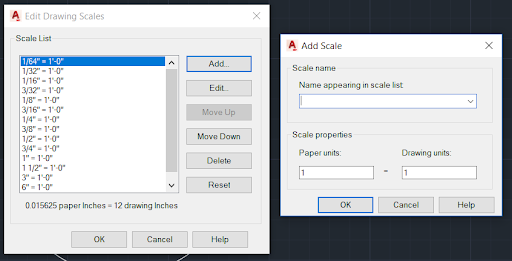

Draftsight 2018 change dimension units professional#
In DraftSight Professional 2018, users can now easily move any dimension by simply clicking on it and dragging it to the desired location.Īs you can see, moving dimensions within DraftSight Professional 2018 has got a lot easier! While this did work, it was far too many steps to perform such a simple task. Previously in DraftSight, the user had to select the dimension they wanted to more and use the “ dimension handles” to move it. The first of these new features is Re-position Dimensions. Also, individual dimensions may be set to Dual Dimensioning by check marking the Dual Dimension group box in their PropertyManager.Today, both of the new features we are going to talk about in DraftSight Professional 2018 deal with Dimensions. Go to each dimension type and check mark Dual dimensions display. But hey, who’s it hurting?įor SolidWorks, dual dimensions on a drawing may be employed by going to Tools>Options>Document Properties>Dimensions. Of course, over use of reference dimensions is also discouraged by ASME Y14.5. This can be accomplished by adding a note similar to “DUAL DIMENSIONS IN BRACKETS ARE FOR REFERENCE ONLY.” This avoids problems caused by multiple interpretations for dimensions. In the effort to avoid issues and violations of the standards, it may be helpful to control dual dimensions with a note that states they are for reference only on the drawing. Handling of dual dimensions using common practice can create confusion on a drawing. However, if used, caution must be exercised. With all of these arguments aside, CAD applications do accommodate users who need this capability. It could be said that dual dimensions are disallowed unless they are considered reference only.

It is considered auxiliary information and does not govern production or inspection operations.īy definition of reference dimensions, dual dimensions should be treated as reference dimensions. A reference dim is a repeat of a dimension or is derived from other values shown on the drawing or on related drawings. With this practice discouraged, dual dimensioning is also discouraged.ĪSME Y14.5M-1994 defines a reference dimension as such,Ī dimension usually without tolerance, used for information purposes only. However, the practice of soft conversion is integral to using dual dimensions.

This is not an outright prohibition against dual dimensioning by itself. However, I will also explore the soft arguments against their use.ĪSME Y14.100-2004 paragraph 4.32.3 uses soft language to discourage the practice of converting inch to metric and vise verse (“should not be used”). This is the hard argument against the use of dual dimensions. The conclusion that can be drawn from this is that dual dimensions are actually not allowed by ASME Y14.5. This creates a situation where the dimension has more than one interpretation, which is specifically prohibited by 1.4(d). This means that the dual dimension tolerance range is usually resized to fit within the tolerance range of the primary unit of measure. It is nearly impossible for nominals and tolerance ranges to be identical between units of measure. This creates issues in that it allows for more than one interpretation of the dimension. General practice in the use of dual dimensions is that they are of equal importance to the primary dimension. In ASME Y14.5M-1994, that wording is as such in 1.4(d),ĭimensions shall be selected and arranged to suit the function and mating relationship of a part and shall not be subject to more than one interpretation. It may vary between versions, but carries the same meaning in all versions. There is wording in the ASME standard that suggests dual dimensions aren’t compliant.

This is apparently because it was mentioned in a previous version. ANSI Y14.5M-1982 does mention in its appendix that support for dual dimension no longer exists in the standard. When invoking ASME Y14.5 (or even ANSI Y14.5M-1982), one will find that rules regarding dual dimensions do not exist. At one point, it was a surprize to me (and often is to others too) that no current drafting standard actually supports dual dimensioning. SolidWorks and many other CAD programs support dual dimensioning. This article is based on an article that originally appeared on SolidWorks Legion.ĭual dimensioning is the drafting practice of using multiple units of measure in a dimension in the same direction of a feature.


 0 kommentar(er)
0 kommentar(er)
